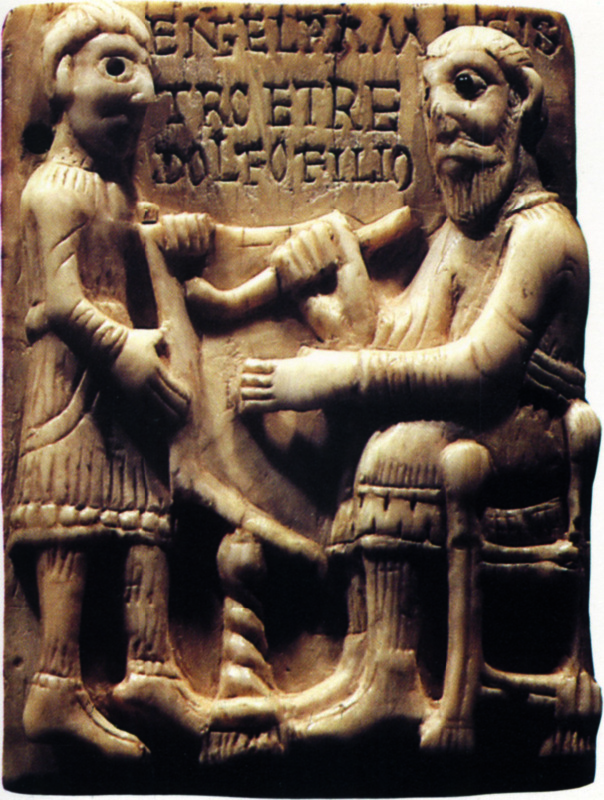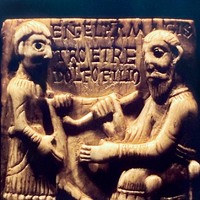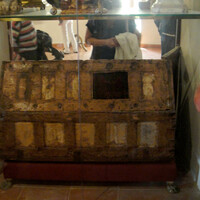Reliquary of St. Aemilian
Type:
Reliquaries
Date:
1060–80
Location or Findspot (Modern-Day Country):
Spain
Description:
A casket reliquary (also called an arca) covered in carved ivory panels with gems and gold reliefs was once housed in the monastery church at San Millán de la Cogolla. With its scenes from the life of the Visigothic hermit Aemilian (Millán), patron saint of the monastery, the casket in its original form presented viewers with a hagiographic cycle, meaning a narrative sequence with events from the saint's life. The monastery now has the original wooden core, stripped of its ivory plaques, and a reproduction of how the reliquary may once have appeared.
Of the twenty-two original plaques that covered the core, only sixteen survive, and these have been dispersed across different institutions. One panel reproduced here shows Aemilian climbing up Mount Dircetius where, according to the inscription in the upper arch, he "seeks the wilderness" (eremum expetit). Below, he appears as a shepherd tending to his flock, and the inscription explains that "the future shepherd of men was the shepherd of sheep" (futurus pastor homin[u]m erat p[a]st[o]r ovium). He blows into an olifant, a horn made from an elephant tusk. Another panel features the artist Engelram with his son Redolfo, identified in an inscription that reads, "by Master Engelram and his son Redolfo."
The mandorla-shaped plaque of Christ in Majesty was previously on one of the casket's two gables, and the space for it is still visible when one examines the wooden armature. Christ's inlaid eyes are a feature typical of ivory carving at León and San Millán.
Of the twenty-two original plaques that covered the core, only sixteen survive, and these have been dispersed across different institutions. One panel reproduced here shows Aemilian climbing up Mount Dircetius where, according to the inscription in the upper arch, he "seeks the wilderness" (eremum expetit). Below, he appears as a shepherd tending to his flock, and the inscription explains that "the future shepherd of men was the shepherd of sheep" (futurus pastor homin[u]m erat p[a]st[o]r ovium). He blows into an olifant, a horn made from an elephant tusk. Another panel features the artist Engelram with his son Redolfo, identified in an inscription that reads, "by Master Engelram and his son Redolfo."
The mandorla-shaped plaque of Christ in Majesty was previously on one of the casket's two gables, and the space for it is still visible when one examines the wooden armature. Christ's inlaid eyes are a feature typical of ivory carving at León and San Millán.
Relevant Textbook Chapter(s):
6
Repository and Online Resources:
• Read more about the plaque in the Metropolitan Museum of Art.
• See a plaque with the death of St. Aemilian in the Boston Museum of Fine Arts.
Image Credits:
Metropolitan Museum; Charles T. Little, used by permission; Wikimedia Commons






